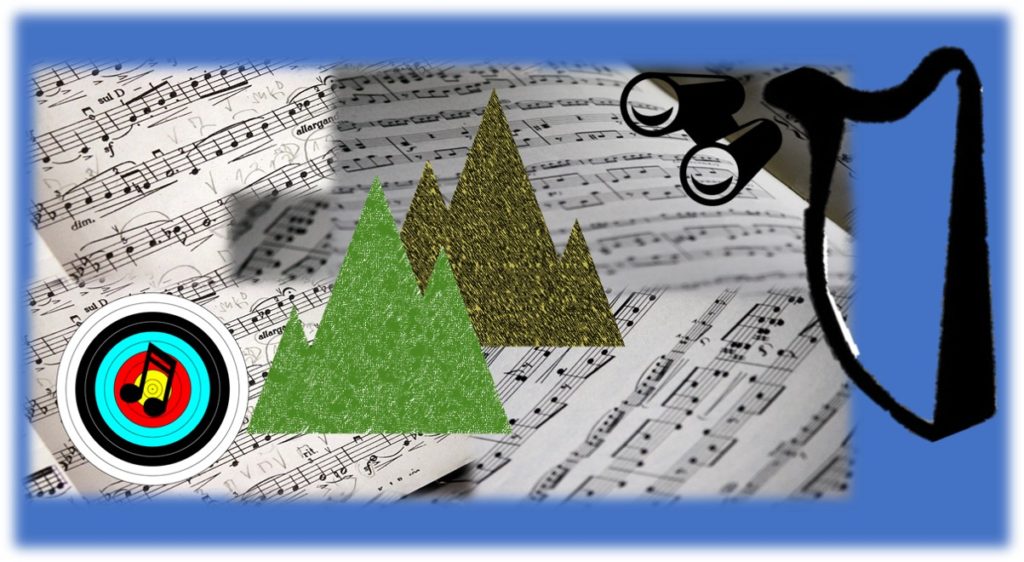Joseph Cossman, the well-known entrepreneur, is quoted as saying, “Obstacles are things a person sees when he takes his eyes off his goal”. That’s worthy of being embroidered and hung over your harp.
And this point couldn’t be more true than when you have heard a beautiful piece of music that you desperately want to play….and then you see the sheet music. Few things are more disheartening than that initial visual assault of the dots. All those pages! All that ink! All those notes! All at the same time! Chords and ornaments and complex rhythms – who has that many fingers?!?
I always tell my students that there is nothing they cannot play. There may be a wide gulf between where they are just now and the skills a particular piece requires – but that just means that the path to playing that piece lies in not being afraid of a little hard work. It also means that it might take some time to master the music, but – there is nothing you cannot play*.
Clearly, the music is playable (remember – you heard it!). So, the real challenge is to focus on the music. And to stop staring at the obstacles. Keep an eye on the goal – see past the dots.  What are the obstacles, typically? And how do you see past them? Here are some that are reliably likely to trip you up:
What are the obstacles, typically? And how do you see past them? Here are some that are reliably likely to trip you up:
- Poor, or as-yet-undeveloped technique. When you hear lush beauty, it is backed by strong, solid, developed and practiced technique. Always be working on your technique including learning things you haven’t had to use before. For example, if you’re self-taught or just haven’t gotten there yet – do you know how to do a glissando correctly? Always be on the lookout for things you haven’t learned how to accomplish properly and include them in your overall practice plan.
- Lack of practice reading. If you are not a strong reader, even looking at relatively simple music notation can be intimidating. And looking at a complex piece of music (whether it has a complex rhythm, a lot of big chords, or notation that’s new to you) can really throw you. Reading, like every other aspect of playing, requires practice. Identify music that you can read with some effort, and practice. Work and time will get you to that place where you are comfortable identifying the notes and their names, the intervals by their locations, and repeated patterns used throughout the piece. If you need it – do some flashcards time. Learn and practice analyzing the page and you will get better at it – and that will make it come more easily too.
- Not making the time to get the music. If you are growing into a piece of music – you need to give yourself time. Time to analyze, to work, to practice, to become comfortable with the music and the playing of it. If you are working on a stretch piece – or if you have identified a long-range goal, be sure to give yourself the time you need to do the work, including any things you have to learn to master the piece. If you are a relatively new harper, there may be a large number of things you need to learn – and that’s ok – as long as you give yourself the time to learn all of them!
There are other obstacles, but for now, keep your eye on your goal. Don’t lose sight of the path. Give yourself permission to divert and learn. And periodically you can return to the piece. And make sure you know what you can see.
* don’t be obtuse – of course there are arrangements that may not fit on your harp, but assuming the arrangement is appropriate to your harp (that is, if there’s pedal markings and a lot of accidentals, you might want to pass on trying to play it on your lever harp – but even then, if you’re really up for a challenge, you go ahead and give it a try!).